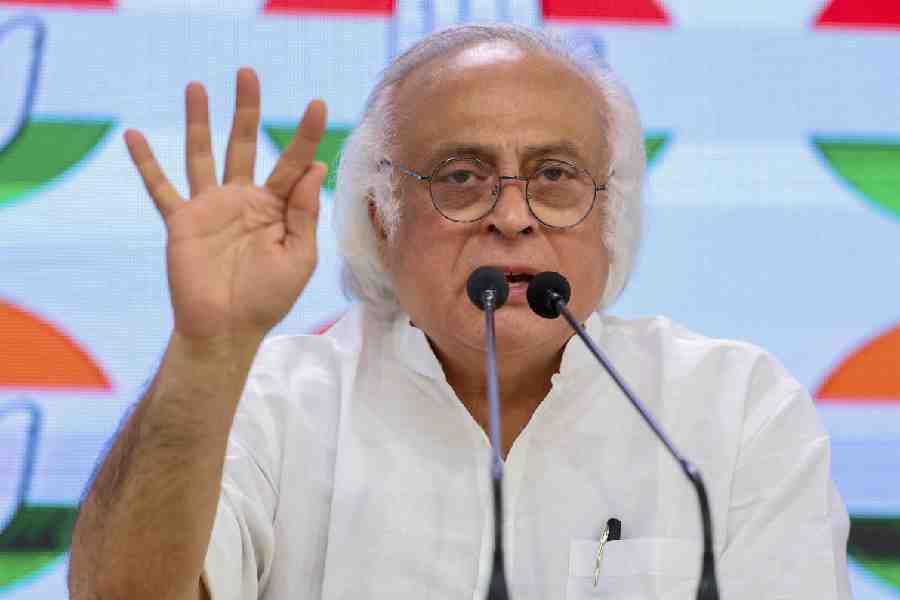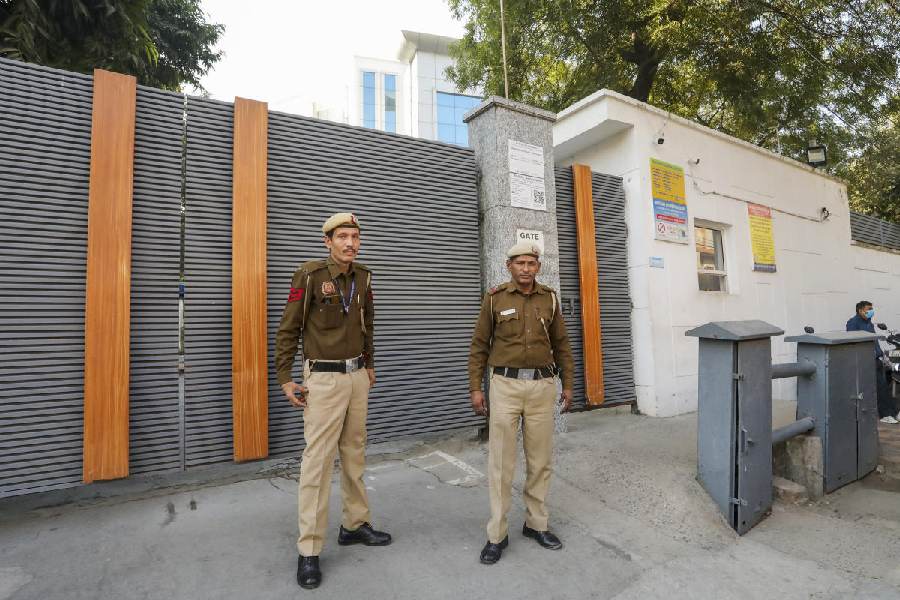 |
| Artist Uchral with a painting of Genghis Khan |
Ulan Bator, May 27: Children are named after him. So are streets and hotels. Even cigarette brands and candy bars.
Not bad, certainly, for the original bad boy of history.
But then, tell that to Mongolians and they’d say Genghis Khan was a truly great, if irascible, ruler.
A popular and official movement is on to reassess Genghis Khan’s marauding image since Mongolia emerged from the former Soviet Union’s shadow in the nineties. Today, the lore and myth surrounding the warrior-king have captured the imagination of Mongolians who now openly embrace one of history’s greatest tyrants as their greatest hero.
“He is like a god to us,” says Bat-Erdene Batbayar, a historian and adviser to Prime Minister Elbegdorj Tsahkia. The Prime Minister sums up the mood. “Genghis Khan wasn’t really a bad guy. He just had bad press.”
Some historians are also coming round to the view.
Despite historical evidence that Genghis Khan and his hordes killed about 40 million people across Europe and Asia, some researchers now say one of the main reasons the Mongols were burdened with such a marauding image is that their history was written by their enemies.
The only comprehensive Mongol chronicle of Genghis Khan’s times, The Secret History of the Mongols, was lost for centuries and “so most of the material on Genghis Khan came from people he conquered”, says Batbayar.
So when Francis Woodman Cleaves published the first authoritative modern version of The Secret History of the Mongols in 1982, it promoted a slow but steady reassessment of the ruler. Now, some newly found details like Genghis Khan’s apparent fear of dogs make him seem more human. Historians also laud him for trying to turn his empire into a civil state based on a code of laws that granted religious freedom, equal and defined legal rights to all citizens, including women, and banned slave trade.
The extent of his empire also led to greater contact between the East and the West, and these exchanges, researchers say, were carried further when his grandson Kublai Khan befriended Marco Polo. Others say Genghis Khan himself exaggerated his massacres to terrify foes into submission.
If Moscow banned mentioning Genghis Khan’s name fearing it might incite Mongol nationalism during the seven decades it controlled Ulan Bator, no one looms larger in Mongolia’s history now than Temujin who took the title Genghis Khan, or universal ruler, after forging the world’s largest land empire in the early 1200s.
“He is the founder of our state, the root of our history. The communists very brutally cut us off from our traditions and history and got us to adopt the ways and views of western civilisation ? with a red colour of course, but still western. Now we are becoming Mongols again,” says Batbayar.
So evidence of the new romance with Genghis Khan is everywhere: children, streets, hotels, vodka, cigarettes, banks, candy bars, beer and businesses of almost every type carry his name.
As Genghis Khan’s legacy is free of living memory, it is proving easier to revise. In fact, nations wanting to curry favour with resource-rich Mongolia are supporting its attempts to resurrect its past.
Since Mongolians worship their dead and the location of Genghis Khan’s grave remains unknown, both China and Japan are trying to outdo each another in sanctifying his memory.
China is spending about $20 million to renovate a mausoleum it built to Genghis Khan in 1954 in its province of Inner Mongolia. In October, a Japanese-financed team searching for the tomb said it had found it at Avraga, central Mongolia.
“I want people to see Genghis Khan as great, not evil,” says Uchral, 20, a painter who sells his watercolours to tourists outside the Soviet-era Ulan Bator Hotel. His portraits depict Genghis Khan as an imposing but contemplative man, quite unlike the bloodthirsty marauder who, as Persian texts say, warned the ancient cities of Bukhara and Samarkand that all who surrender will be “spared” and whoever opposes with struggle and dissension “annihilated”.
History aside, Genghis Khan’s most astounding effect remains on the world’s demography. In February 2003, a study titled The Genetic Legacy of the Mongols estimated that Genghis Khan, who had hundreds of wives and countless concubines, has more than 17 million direct descendants living today.
This means one in every 200 people is related to him.
In Mongolia alone, as much as 16 per cent of the population could be his descendants.










